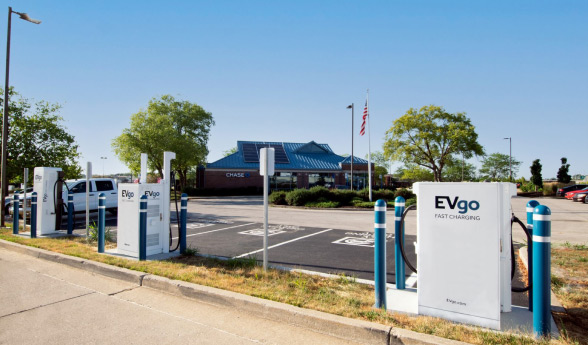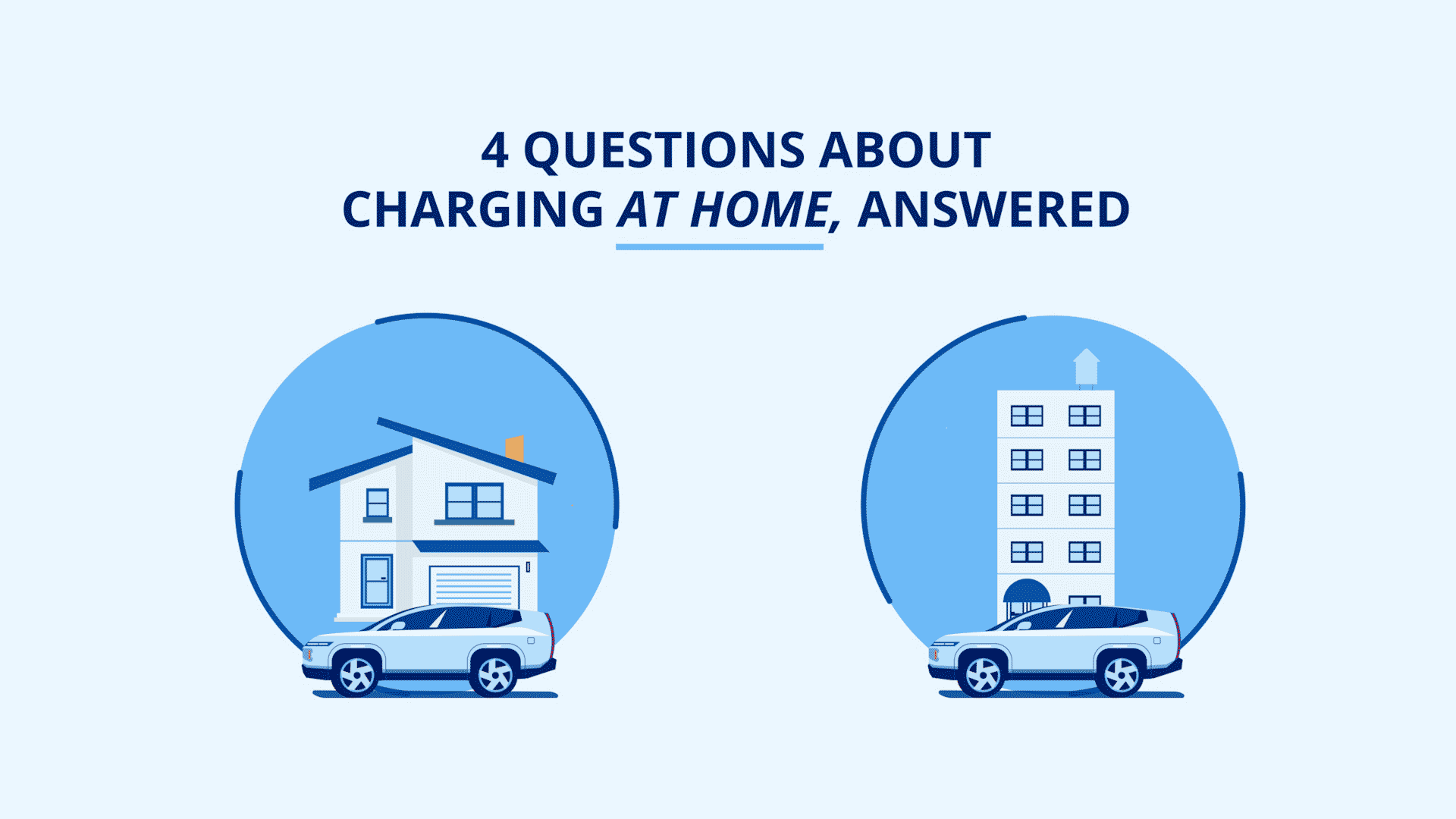"Range anxiety."
It’s what happens when that “empty” signal lights up on your dashboard, and you start looking for the nearest gas station. The difference with electric vehicles (EVs) is that most people charge up at home, and there are fewer public charging stations than there are gas stations—at least for now. We're here to help you with tips for how to charge at home and how to plan for longer trips using public charging stations across the country.

How to charge an
electric car
There are three types of EV charging levels: Level 1, Level 2 and Level 3.
How to charge an electric vehicle at home
If you’re interested in buying an electric vehicle, you probably have some questions about how to charge it at your home. Most drivers choose to install a home charging station in their garage or near their parking space to facilitate a Level 2 charge, which is much faster than charging on a standard household outlet.
What you need to know about charging on the road
EVs can take you anywhere, thanks to a growing network of public charging stations across the country. Much like fueling up at the gas pump, these stations allow EV drivers to journey beyond one charge.
Electric vehicle charging
at Chase branches
Chase provides Level 3 fast chargers at several branch locations across the U.S., offering EV drivers access to 100kW and 350kW chargers that can charge electric vehicles as much as 80% in 15-45 minutes.*same page link to footnote star link
Explore locationsOpens right side nav to see locations modal

To learn more about JPMorgan Chase’s firm-wide commitment to sustainable development, explore our Environmental, Social and Governance pageopens in a new window.
*same page link returns to footnote star linkActual charging speed depends on vehicle’s charging capability.
EVgo fees apply. Visit EVgo.com for fees, terms, conditions, and other details.
The name EVgo and the EVgo logo are owned by EVgo or its affiliates and are licensed to JPMorgan Chase Bank, N.A. ("Chase"). EVgo is solely responsible for its products and services and
for promotional statements about them, and is not affiliated with Chase or its affiliates.
Installing an electric vehicle charging station at home

Level One
120V
Common household outlet
Charge Time
2-5 miles of range per 1 hour of charging

Level Two
240V
Common household outlet with higher voltage, same as those used for clothes dryers
Charge Time
10-20 miles of range per 1 hour of charging

Level Three
208 or 480V 3-Phase AC
Public charging station
Charge Time
180-240 miles of range per 1 hour of charging

Level One
120V
Common household outlet
Charge Time
2-5 miles of range per 1 hour of charging

Level Two
240V
Common household outlet with higher voltage, same as those used for clothes dryers
Charge Time
10-20 miles of range per 1 hour of charging

Level Three
208 or 480V 3-Phase AC
Public charging station
Charge Time
180-240 miles of range per 1 hour of charging
“Charging station” is a commonly used term for the equipment used to charge electric vehicles and plug-in hybrid electric vehicles. The “station” simply includes the cord and a user-friendly dock to keep the cord clean and organized.
Similar to cell phones, the cords differ by manufacturer. Some EV models require a brand-specific charger that comes from the manufacturer, but others can be purchased from a range of home improvement stores and online retailers. Be sure to consider cord length, warranty options, and your car’s specific needs when shopping for a charging station.
Part of building a new charging station is adding the correct voltage outlet. Home charging stations work best with a 240-volt outlet rather than a standard electrical outlet. While these outlets are common, most EV drivers hire a professional electrician to install one near their parking location. Same page link to footnote reference 5
According to HomeGuide, the cost of a Level 2 home charging station installation ranges from $750 to $2,600, which includes the Level 2 charger, 240-volt outlet, wiring, and wall mounting. More extensive installations that require significant wiring or upgrading the electrical panel could cost between $2,000 and $5,000. In some areas, there may be a government incentive available to cover a portion of these costs. Find out more using this incentive look-up tool.
Tips for charging EVs at home
1
If parking outdoors, be sure your charging equipment is all rated for outdoor use.
2
If charging at a multi-family residential complex, be sure to speak to your building management about additional considerations.
3
As with any electrical work, you may be required to obtain permits from your local building authorities.
1
If parking outdoors, be sure your charging equipment is all rated for outdoor use.
2
If charging at a multi-family residential complex, be sure to speak to your building management about additional considerations.
3
As with any electrical work, you may be required to obtain permits from your local building authorities.
Sources
This content is for educational purposes only and provides general auto information. The material is not intended to provide legal, tax, or financial advice or to indicate the availability or suitability of any JPMorgan Chase Bank, N.A. product or service. Outlooks and past performance are not guarantees of future results. Chase is not responsible for, and does not provide or endorse third party products, services or other content. For specific advice about your circumstances, you may wish to consult a qualified professional.








